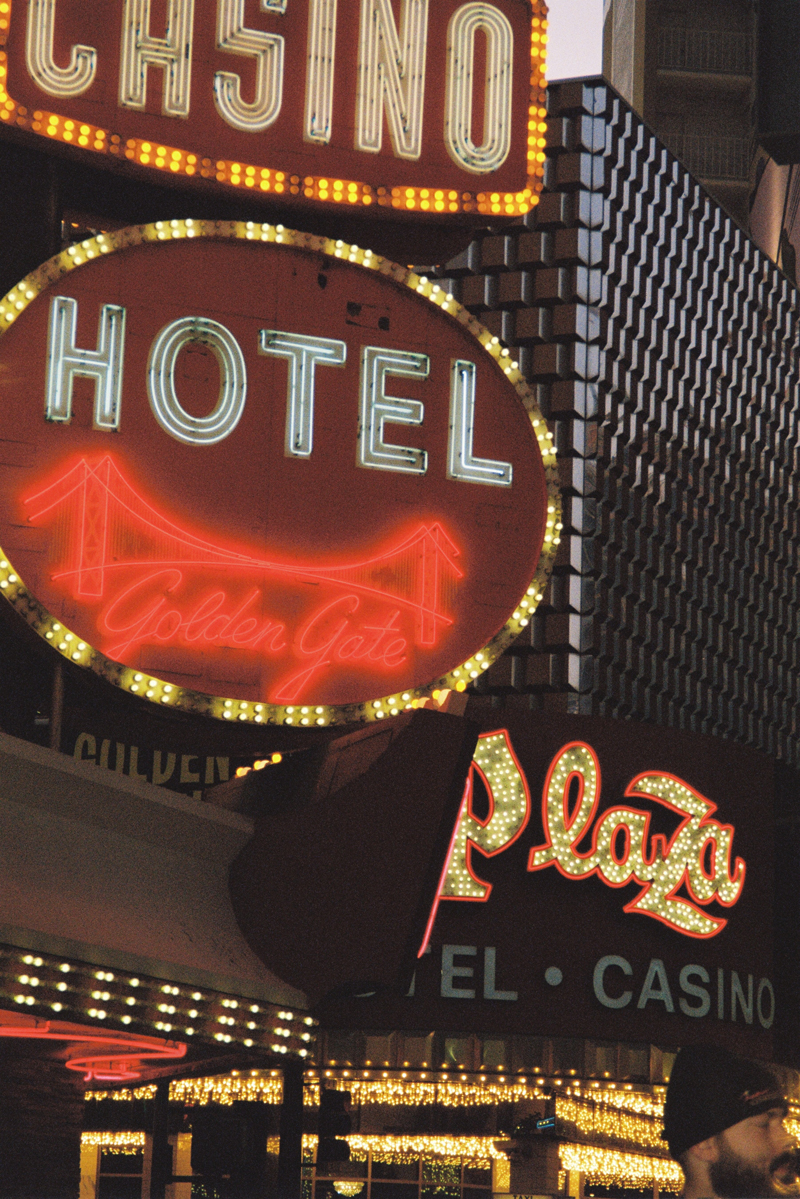Distracted Driving and Las Vegas
Distracted driving in Las Vegas has taken on a whole new meaning over the years with the construction of the Las Vegas Sphere. This massive structure is comprised of a dome, and other attractions, including a concert hall, a theatre, an art gallery, and outdoor areas. While these features provide entertainment to visitors, they are also increasing distracted driving in the area.
The Las Vegas Sphere is located on a major thoroughfare in Las Vegas and due to its popularity attracts drivers from all over the area. With all of the features located in the Sphere, drivers can become easily distracted as they drive by it. Drivers are more likely to take their eyes off of the road, and may be more prone to make mistakes or have trouble focusing on the task of driving due to their fascination with the structure. Those who are visiting the Sphere may be unaware of local laws and regulations or may not be familiar with the area, which can also lead to an increase in distracted driving.
The Las Vegas Sphere is an impressive architectural wonder that stands tall in the heart of Las Vegas. Standing at an astounding height, it captivates the attention of onlookers with its breathtaking LED display. This mammoth structure boasts a massive LED screen that features countless LED pucks, creating a vibrant visual spectacle.
The debut of the Las Vegas Sphere was met with great anticipation and excitement. Comparable to the iconic Spaceship Earth at Walt Disney World, this spherical masterpiece mesmerizes spectators with its immersive visual displays. The LED screen that encompasses the entirety of the sphere is a visual feast for the eyes, showcasing brilliant colors and captivating imagery.
The Las Vegas Sphere has become a symbol of technological innovation and artistic expression. Its LED screen, composed of numerous LED pucks, allows for creative and dynamic visual presentations. Whether it’s displaying dazzling light shows or showcasing awe-inspiring graphics, the Las Vegas Sphere is a testament to the limitless possibilities of LED technology.
With its stunning resemblance to Spaceship Earth and its impressive LED display, the Las Vegas Sphere has quickly become a must-see attraction. From its towering presence to its captivating visuals, this architectural marvel is a sight that leaves visitors in awe. The Las Vegas Sphere truly embodies the spirit of Las Vegas – a city known for its grandeur and spectacle.
The Sphere in Las Vegas, which is the largest spherical structure in the world, lit up for the first time Tuesday night showcasing a dazzling display to celebrate Fourth of July. pic.twitter.com/lwwsyfnxYE
— CBS News (@CBSNews) July 5, 2023
Las Vegas, NV Distracted Driving Statistics
Las Vegas, NV is known for its vibrant nightlife, but it also has a darker side when it comes to distracted driving. According to statistics from the Nevada Department of Motor Vehicles, distracted driving is responsible for an alarming number of car accidents in Las Vegas each year. In 2017 alone, there were more than 5,000 collisions caused by drivers who were distracted by their phones or other electronic devices. [2]
Distracted driving takes many forms, from texting while driving to simply taking your eyes off the road for a moment. The National Highway Traffic Safety Administration estimates that approximately 9 people die every day in the U.S. due to distracted driving-related collisions.
In an effort to reduce these tragic fatalities, the Nevada Department of Motor Vehicles has launched a campaign called “Take the Pledge” to encourage drivers to put their phones away and keep their eyes on the road.
Although Las Vegas is known for its vibrant nightlife, it’s important to remember that distracted driving is no laughing matter. Drivers must take responsibility for their actions and keep safety in mind when they get behind the wheel. By making a conscious effort to stay focused on the road, drivers can help make Las Vegas a safer place to drive.
Types of Distracted Driving in Las Vegas
There are three main types of distracted driving: visual, manual, and cognitive distractions.
Visual distractions: This type of distracted driving occurs when the driver takes their eyes off the road, such as looking at a phone or reading a map. Manual distractions involve activities that require the driver to take their hands off the steering wheel, like eating or reaching for an object.
Cognitive distractions: These types of distractions on the other hand, involve mental engagement that takes the driver’s focus away from driving, such as daydreaming or engaging in deep conversations.
Manual distractions: Manual distractions are any activities that require the driver to take their hands off the steering wheel. These activities include eating, drinking, changing radio stations, and adjusting mirrors or climate controls. Additionally, manual distraction can also occur when a driver tries to multitask by handling objects in their vehicle while driving. This type of behavior not only takes away from the primary task of driving, but it can also lead to dangerous circumstances.
Any of these distractions can significantly impair a driver’s ability to react to unexpected situations and greatly increase the risk of accidents. It’s crucial that drivers remain alert, focused, and fully engaged behind the wheel to prioritize the safety of themselves and others on the road.
Visual Distractions in Driving in Las Vegas
Visual distraction is one of the key types of distracted driving that significantly impacts driving behavior and safety. It involves diverting one’s attention away from the road due to visual stimuli, such as looking at a mobile device, GPS, or a particular object outside the vehicle.
Factors that contribute to visual distraction include glance frequency, glance duration, and repeated glances. Glance frequency refers to the number of times a driver shifts their focus away from the road, while glance duration refers to the length of time for which the driver’s attention is diverted. Repeated glances occur when a driver repeatedly looks at the same visual stimuli over a short period of time. These factors increase the risk of accidents since the driver’s attention is not fully focused on the road.
Detecting and monitoring visual distraction is crucial for accident prevention. Technologies such as visual-based sensors can identify distractions and measure glance frequency, duration, and repeated glances.
By monitoring these factors, driver alert control systems can alert drivers to the presence of visual distraction and encourage them to refocus on the road. This proactive approach helps mitigate the risks associated with visual distraction and promotes safe driving behavior.
In conclusion, visual distraction plays a significant role in driving behavior and safety. Understanding the factors that contribute to visual distraction and the importance of detecting and monitoring it can help prevent accidents and ensure the safety of both drivers and pedestrians on the road.

Cognitive Distraction and Driving in Las Vegas
Cognitive distraction is a concept that refers to the mental load or cognitive demands placed on drivers, which can significantly impact driving performance. It occurs when a driver’s attention and focus are diverted from the primary task of driving, leading to reduced awareness, slower reaction times, and an increased risk of accidents.
There are several scenarios where cognitive load may occur during driving. One such scenario is engaging in secondary tasks. These tasks involve activities that are not essential to driving but are performed simultaneously, such as talking on the phone, texting, or using in-car infotainment systems. These secondary tasks divert the driver’s attention away from the road, causing cognitive distraction.
Internal activity is another source of cognitive distraction. This includes thoughts, daydreaming, and being preoccupied with personal or work-related matters. When drivers become lost in thought or mentally absorbed in other activities, their attention is diverted from the driving task, impairing their ability to respond to potential hazards.
Even the primary driving task itself can lead to cognitive load. Factors such as navigating unfamiliar routes, complex traffic situations, and making critical decisions on the road require cognitive processing and can lead to distractions.
Various methods and technologies exist to detect and analyze cognitive distractions in drivers. Eye-tracking technology, for example, can monitor eye movements and gaze behavior to assess the driver’s attention allocation. Brainwave monitoring systems provide insights into the driver’s cognitive workload levels. Additionally, smartphone apps and in-vehicle sensors can detect and discourage certain secondary tasks, promoting safer driving behavior.
In conclusion, cognitive distraction poses a significant risk to driver safety. Understanding the different scenarios and sources of cognitive load during driving and employing advanced detection methods and technologies can help mitigate these distractions and promote safer driving practices.

Manual Distraction of Driving in Las Vegas
Manual distraction is a scenario where cognitive load occurs during driving and affects the driver. This type of distraction involves engaging in physical tasks or activities that divert the driver’s attention away from the primary driving task. Some common examples of manual distractions include eating and drinking, adjusting vehicle controls, grooming, or reaching for objects inside the car.

The Impact of Distracted Driving in Las Vegas
Distracted driving is a major concern not only worldwide but also in Las Vegas, a bustling city known for its vibrant entertainment scene and active roadways. The impact of distracted driving in Las Vegas is significant, posing serious risks to both drivers and pedestrians.
With constant influxes of visitors and a vibrant nightlife scene, the streets of Las Vegas are often filled with distractions that can divert a driver’s attention away from the road. From the highly illuminated surroundings in the iconic Las Vegas Strip to the late-night revelers, the city presents unique challenges when it comes to maintaining focus while driving.
Understanding the implications and consequences of distracted driving in Las Vegas is essential for promoting safe and responsible driving practices in this dynamic city.
Regulation and Legislation for Driver Safety in Las Vegas
Ensuring the safety of drivers and pedestrians is a top priority for cities like Las Vegas. To address the growing concern of distracted driving, regulations and legislation have been put in place to encourage responsible and alert driving behaviors. These initiatives aim to reduce accidents, injuries, and the psychological and physical harm associated with distracted driving.
By implementing policies that promote safe driving practices, the city of Las Vegas aims to enhance road safety and create a safer environment for all road users. Through these measures, individuals can have a greater peace of mind knowing that steps are being taken to prevent and mitigate the negative consequences of distracted driving.
Technology Used for Detecting and Alerting Drivers
In the effort to detect and alert drivers about distracted driving, advanced technologies are employed, utilizing various methods and algorithms. One such method involves extracting gaze direction to determine a driver’s focus. By monitoring eye movements and tracking where the driver’s eyes are directed, these systems can detect instances of distraction.
Additionally, monitoring head and facial orientation can provide valuable insights into a driver’s level of attentiveness. Algorithms are used to analyze data collected from visual-based sensors and detect deviations from normal driving behaviors.
Visual-based sensors are commonly utilized in these systems to capture images and video of the driver. These sensors are designed to detect and record changes in gaze direction, head orientation, and facial orientation.
However, it is important to note that visual-based sensors face challenges in adverse lighting conditions, such as nighttime or low-light situations. In such conditions, the accuracy and effectiveness of these sensors can be compromised, potentially impacting the detection and alerting capabilities of the technology.
In conclusion, the technology used for detecting and alerting drivers to distractions employs methods and algorithms for extracting gaze direction and monitoring head and facial orientation.
Visual-based sensors play a crucial role in capturing and analyzing data but may face challenges in adverse lighting conditions. Nevertheless, these advancements in technology are vital in promoting safe driving and reducing accidents caused by distractions on the road.
In conclusion, the technology used for detecting and alerting drivers to distractions employs methods and algorithms for extracting gaze direction and monitoring head and facial orientation. Visual-based sensors play a crucial role in capturing and analyzing data but may face challenges in adverse lighting conditions. Nevertheless, these advancements in technology are vital in promoting safe driving and reducing accidents caused by distractions on the road.
Sources:
[1] Loftis, S. (2023, July 7). Distracted drivers cause concerns, delays around new Las Vegas MSG Sphere. KLAS. https://www.8newsnow.com/news/local-news/distracted-drivers-cause-concerns-delays-around-new-las-vegas-msg-sphere/
[2] Focus On The Road- Distracted Driving – Zero Fatalities. (n.d.). Zero Fatalities. https://zerofatalitiesnv.com/focus-on-the-road/

